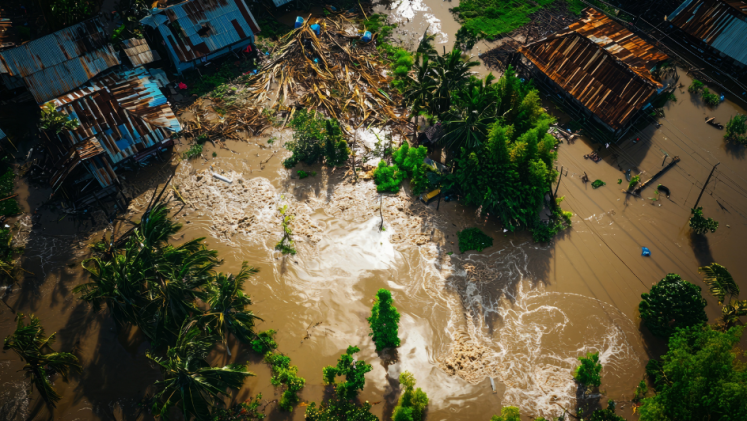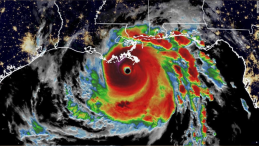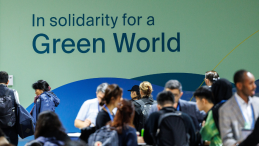Yagi. Yagi means "goat" in Japanese, but in September 2024, it became synonymous with destruction. On 6 September, super typhoon Yagi hit Hainan Island, China, before moving across Viet Nam, Laos, Thailand and Myanmar. Sustained windspeeds of 230–260 km/h and extreme rainfall exceeding 700 mm in some areas caused widespread impacts to livelihoods and damage to infrastructure. The agricultural sector, particularly rice paddies nearing harvest, suffered significant damages. Direct impacts on important manufacturing hubs also resulted in large economic losses, reversing years of development gains. While the number of super typhoons is projected to increase, such hazards do not need to turn into disasters. Smart policies, societal preparedness, rapid disaster response mechanisms and concerted actions aimed to address underlying root causes of disasters can substantially reduce their impacts. This underscores the critical importance of comprehensive risk management. In early June 2025 in Geneva, Switzerland, the United Nations Office for Disaster Risk Reduction (UNDRR) is hosting the Global Platform on Disaster Risk Reduction, a global convening for stakeholders to review progress, share knowledge and discuss the latest developments and trends in reducing disaster risks. In the run-up to the Global Platform, this perspective outlines three promising areas on how current and future risks can be reduced.
Working with AI to reduce disaster impacts?
As climate risks escalate globally, Artificial Intelligence (AI) is emerging as a transformative tool in disaster risk reduction (DRR). AI offers the potential to overcome traditional limitations by providing data-driven insights that enhance forecasting and preparedness, ultimately contributing to greater climate resilience through improved early warning and risk modelling. For instance, AI can significantly support all four pillars of the Early Warnings for All initiative, by speeding up hazard detection, advancing risk knowledge for impact-based early warning, accelerating data collection and analysis for monitoring and forecasting, enhancing warning delivery and strengthening response capacities.
However, the effective and equitable deployment of AI presents challenges, particularly concerning ethical governance, accessibility, inclusiveness and algorithmic biases, especially in the Global South. Issues such as digital infrastructure gaps and data limitations also need consideration. Furthermore, the reliance on constant connectivity and new technologies could introduce new vulnerabilities.
Therefore, it is crucial to explore AI's potential in DRR while prioritizing inclusive and ethical approaches. Recognizing this critical balance and drawing conclusions for governance and institutional partnerships will need to be a priority at the Global Platform.
Beyond grey: Leveraging nature for comprehensive risk management
Nature-based solutions (NbS) are important for planning and implementing disaster risk reduction and climate change adaptation, providing vital protection and enhancing adaptive capacity, alongside multiple benefits for society, the environment and the economy. Simultaneously, disasters and climate change cause losses of biodiversity and ecosystem services, with cascading impacts on people, affecting their security, livelihoods, health and ultimately, habitability and dignity.
Poor environmental management fuels risks and, combined with increasing climate impacts, limits comprehensive risk management. A critical step for building long-term resilience is to fully understand, acknowledge and leverage the diverse values of nature as an integral part of climate and disaster risk management.
The Global Platform provides a critical opportunity to lead and scale up this crucial integration of diverse values of nature. One such initiative of UNDRR, UNEP and UNU-EHS is to include climate and disaster-related losses of biodiversity and ecosystem services in the new disaster losses tracking system of UNDRR. Another step is to promote the planning and implementation of NbS at country levels jointly with policy instruments of the Rio conventions.
From preparedness to recovery: Building financial resilience against disasters
While disasters cause significant direct damage, their long-term developmental impact often stems from indirect consequences like lost livelihoods and fiscal strain. Consequently, building financial preparedness is critical for effective DRR. This involves proactively using various financial tools, from risk-informed investments to insurance and contingent financing – before disasters strike, to reduce vulnerabilities and ensure timely resources for effective response and recovery.
Strengthening global financial resilience requires enhancing the preparedness and recovery capabilities of vulnerable nations and communities. Key elements identified in preparatory discussions to the Global Platform include inclusive local plans, public-private partnerships, integrating risk into financial management and robust pre-arranged financing. Effective multilevel coordination is essential for aligned and equitable recovery.
At the Global Platform, this should translate into a clear call for the comprehensive integration of disaster risk considerations into the core operations of the global financial system, emphasizing necessary partnerships and programmes. One such initiative is a new multi-year global programme by UNCDF, UNDRR and UNU-EHS which focuses on promoting climate disaster risk reduction financing at all levels, benefiting the most vulnerable communities in at-risk countries.
Progress ahead?
The Global Platform comes at a critical moment and at a time when the UN is under increased scrutiny. Two years after reviewing progress towards achieving the goals of the Sendai Framework for Disaster Risk Reduction, acknowledging progress that has been made but also identifying gaps towards achieving the overall goals, the Global Platform needs to show how to put recommendations into concrete actions. The immense human suffering caused by super typhoon Yagi led to its retirement from the list of names used for tropical cyclones in the Western North Pacific basin. The effort should not stop at the names; the true ambition must be to retire the disaster itself.
Suggested citation: Hagenlocher Michael, Buri Sinja and Walz Yvonne. "Global UN Meeting on Disaster Risk Reduction – Three Important Discussions to Follow," United Nations University, UNU-EHS, 2025-05-27, https://unu.edu/ehs/article/global-un-meeting-disaster-risk-reduction-three-important-discussions-follow.





